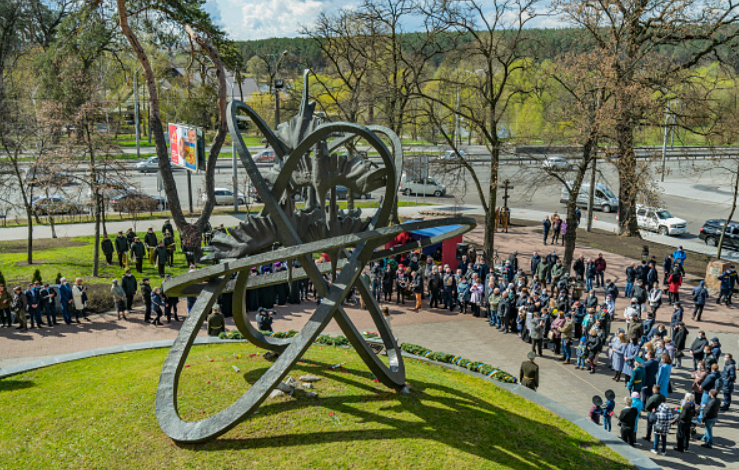
On the eve of Russia’s invasion of Ukraine, Vladimir Putin played the not-altogether-unfamiliar hand of reminding the world of Russia’s nuclear arsenal warning of “consequences as you have never before experienced in your history” for any that interfered. Unlike previous nuclear rhetoric—as during the 2014 Crimea annexation—Putin paired his threats here with putting Russia’s nuclear forces on alert soon after. Russia additionally conducted large-scale strategic nuclear exercises in the lead-up to the invasion, similar to drills Russia undertook in 2014 soon after the annexation amid tension with the West. Beyond the threat of nuclear use, Russia has also become the first country to take over another nation’s civil nuclear energy sites raising risks of nuclear accidents or disaster.
One month after the invasion, the steadfast resistance in Ukraine and international condemnation has revealed weaknesses in the Russian military and shown how misguided early assumptions were of a rapid takeover, with precision operations and little loss of life. The result of the drawn-out campaign has been a bogged-down Russia, increasingly resorting to blunt bombardment tactics previously employed in Chechnya and Syria, targeting civilians and public spaces ranging from theaters to maternity wards. The specter of nuclear weapons has been present throughout the crisis, forcing analysts and policymakers alike to reckon with what constitutes acts of war. Specifically, we are grappling with what Putin, backed into a corner and trapped in a brutal war of attrition, might do. This has all elevated the significance of personalities and the sheer fragility of deterrence systems to the forefront.
With much still unknown, there is little to be gained in making sweeping pronouncements on the long-term reverberations of the Ukraine war on global politics. But norms matter, and escalation can happen quickly. It was not lost on many South Asia watchers that as eyes were on Russia, a crisis came close to emerging across the world between two nuclear-armed states with India’s accidental firing of a BrahMos cruise missile into Pakistani territory. Particularly given pronouncements after the Balakot crisis of how escalatory and easy it would be to misread any missile launched across international boundaries, it is striking that the accidental firing was resolved without further incident.
It was not lost on many South Asia watchers that as eyes were on Russia, a crisis came close to emerging across the world between two nuclear-armed states with India’s accidental firing of a BrahMos cruise missile into Pakistani territory.
Perhaps the most likely norm to change is the way nuclear rhetoric is employed in times of crisis. As with Putin’s nuclear saber rattling and U.S. President Trump’s 2017 “fire and fury” North Korea threats, South Asia’s leadership has also turned to nuclear rhetoric and signaling in the midst of or crises to garner political support. There is a great deal of debate about how seriously we should take this rhetoric, but the ease and speed of which leadership can reach for the nuclear card—and the extent to which Putin’s pronouncements normalize this—should be cause for concern. While Putin’s threats may seem those of a trapped political leader, it is unclear if this will be seen as successful by Russia or other observers in constraining NATO behavior. Indeed, Pakistan’s military strategy hinges on weaving the threats and possibility of nuclear escalation into conventional response options—thereby lowering the nuclear threshold—to constrain any Indian conventional responses to a sub-conventional attack.
Global arms control measures and the strength of nuclear norms were waning long before Russia’s invasion and it is difficult to imagine any near-term revitalization of halted U.S.-Russia arms control discussions. Still, while it remains unclear what long-term impact the war will have on norms ranging from the use of force to territorial integrity, the crisis has undoubtedly forced policymakers and the public to grapple with the catastrophic impacts of nuclear use. Even detonation of a lower yield “tactical” weapons—raised as a possible response from Russia—would still do damage far beyond conventional strikes, including long-lasting impacts of radiation and radioactive fallout. This may bring greater urgency to address gaps in risk reduction measures in other adversarial relationships, even if only at the lowest rung of confidence-building measures.
For a taboo that has long been under-strain, the clear risk of its violation may, on the contrary, be a turning point. As others have noted, Russia’s reliance on its nuclear arsenal has been unsurprising. As the international community has met Russia’s activities with sanctions, Russia faces international isolation and a collapsing economy likely to reverberate domestically for years to come. While the reaction across the globe has been more mixed, the looming nuclear threat has at the very least made any support for Russia (even for assumed allies like China) more complicated. It is easy to dismiss such rhetoric as political maneuvering. However, accepting such threats as the common bluster of today’s nationalist strongman risks drowning out the legitimate discourse on the devastating impact any nuclear use would have.
Editor’s Note: This article is part of a series of SAV Editors’ reflections on Russia’s invasion of Ukraine and its implications for South Asia. Read the full series here.
***
Click here to read this article in Urdu.


